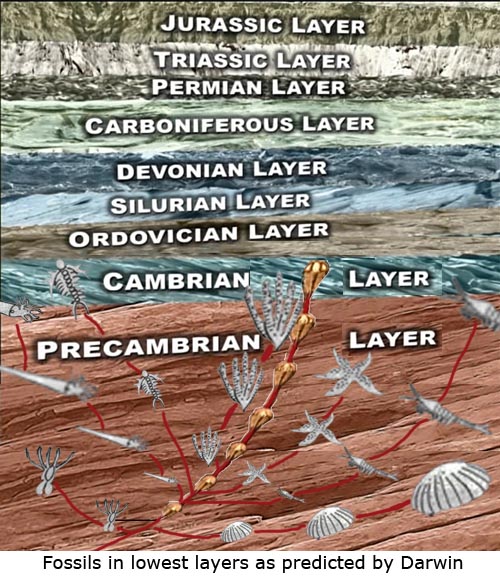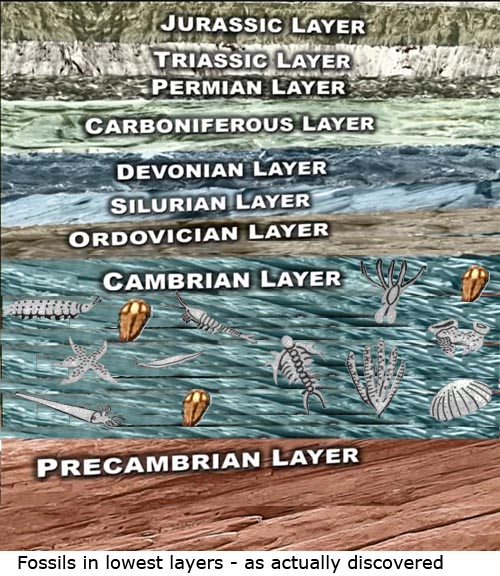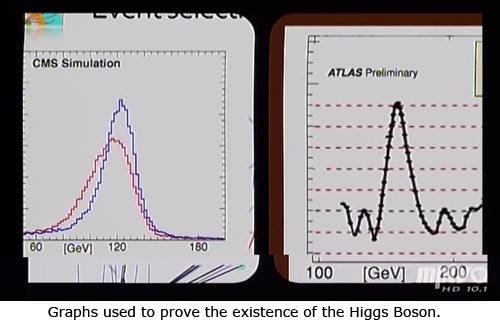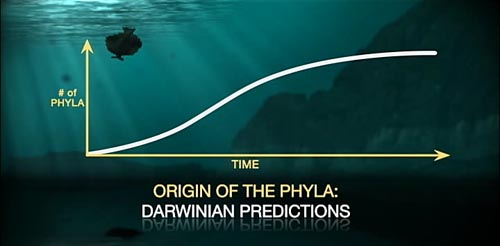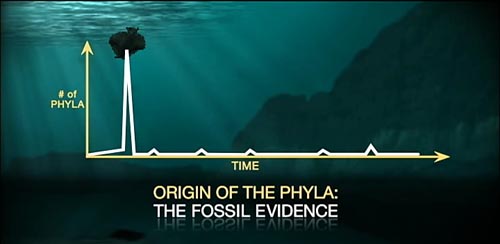Rational Faith
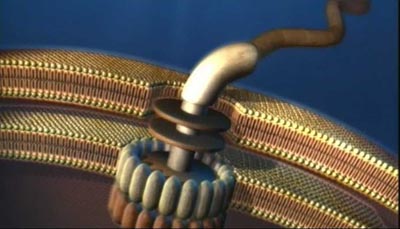 |
Darwinian evolution has been falsified many times. With a recent bacterial find, it's been falsified again. |
| The irreducibly complex bacterial flagellum |
|
As a Christian, there are certain things that I believe that you will not change my mind on. For instance, I hold the following as true:
I have good reasons to believe all these things1, which makes my belief a rational one. (More on that here.) But the fact that regardless of what you show me, I will still believe them indicates that they are un-falsifiable statements, which makes them statements of faith, not of science. That is precisely how faith is supposed to work. Care must be taken that you place your faith in an object worthy of faith. Such as Jesus and the Bible. Once that requirement is met, you continue to have faith in revealed truth because your object of faith (God) has presented evidence of the truthfulness of what you believe. More importantly he knows more than you do about things you now question, like why or how did __x___ (fill in the blank) happen. God will at some future date resolve your questions and make sense of apparent contradictions, but that which he has made clear - like the fact of his existence2 - he expects us to continue to believe regardless of the nonsense and lies unbelievers present. On the other hand, science is not supposed to
work that way. Karl Popper championed the idea of science as
falsification, realizing that "... no amount of data can really prove a
theory, but that even a single key data point can potentially disprove
it."3 There are limits to falsification4, but
where falsification is possible, it is a valuable tool - a tool that
helps identify and separate true science from faith statements. Because
of that
materialists scientists are increasingly turning away from the practice
of falsification because when employed properly, it invalidates
incorrect theories - including pet ones. This invalidation is a
problem for scientists when theories, instead of being scientific,
become philosophical outlooks (as in the case of evolution5)
or when they lean toward the
metaphysical (as in the case of multiverses6).
This desire to protect scientific theories - even when it can be
demonstrated they are wrong shows that science without falsification
tends toward religion. Science without Falsification tends toward Religion In science disciplines where falsification is possible, it is easily demonstrable that scientists increasingly reject the notion of falsification because they prefer not to have their favored theories (like evolution) shown to be without merit by stubborn inconveniences like facts and evidences. In the case of metaphysical concepts like the multiverse - they prefer not to have have their theories ruled as un-testable metaphysics or religion instead of science. Someone will say since it is "easily demonstrable" then do so. Very well, but let me clarify: that statement was directed at evolution because it is a testable concept, unlike the concept of the multiverse which is not testable. As Jay Richards, senior fellow at the Discovery Institute puts it regarding a supposed multiverse, "It's an interesting idea. There's really only one problem with it. There's no independent evidence that it's true."7 There's no evidence because it can't be tested, which means no evidence can be generated. Furthermore, the multiverse is a metaphysical concept similar to ideas John Lennox chides Stephen Hawking for with regards to statements Hawking made in his book The Grand Design.8
Evolution has been falsified before,
and with this latest bacterial discovery, it has been falsified again.
Why has a falsified theory retained such popularity? Evolution is a
manifestation of a rejection of God and the morality that comes with
believing in God. (This, by the way, is another reason why Christians
who believe in evolution are misguided. See
Can you be a Christian and believe in Evolution?)Those who deny
God feel free to make up their own worldview and morality, and with it
attempt to make up science that fits their worldview. But science facts
are just that: facts meaning established truths. One can not change the
facts because they do not fit your worldview. By refusing to acknowledge
evolution's obvious problems, deniers of the powerful evidence against
evolution demonstrate they hold the tenets of evolution as statements of
faith which they consider to be above the facts. In science -established
facts can disprove theories if the theories don't fit the facts; but
theories cannot change established facts - however much you might wish
they could. Those who refuse to accept the facts regarding evolution
show they hold evolution not as a series of testable, disprovable
scientific theory, but as inviolate faith. In addition to reasoned
evidences like Behe's argument for irreducible complexity based on
bacterial flagellum (above) that militate against evolution9,
there are many hard facts that falsify evolution. Let's rehearse a
few starting with the recent bacteria discovery: 1. Unchanged (Un-evolved) 2 Billion year old Bacteria Following is an excerpt from an announcement made 2/2/2015 by the UCLA Newsroom of the discovery of bacteria that have not evolved for 2 billion years:
Even this supporter of evolution can't hide the fact that things don't add up in the evolutionary worldview with this latest find. Their attempts to salvage the theory fall far short of believable. That attempt is this: evolutionists are saying this find actually proves evolution - because the environment didn't change for the microorganism, and evolution predicts there should only be change when the environment changes - creating new pressures on the organism. The problem with that is, that's only true for classical evolution as Darwin first proposed it, where only natural selection operates as a change agent. But no scientist alive adheres to merely classical Darwinism. They've all adopted and injected the concepts of genetics and mutations into evolution, transforming it into what is typically referred to as "Neo-Darwinism." And Neo-Darwinism uses genetic mutations as a key mechanism for change and states that change is always occurring. In fact they say the change is so regular, they can use it as a genetic dating technique which they call a "Molecular Clock." Geneticist Mark Stoneking from the Max Planck Institute explains that, "It's based on the fact that the sequence of chemical bases which make up DNA mutate at a regular rate."11 Since mutations happen regardless of
environmental factors - and they happen at "a regular rate" - so much
so, that they can use mutations as a clock, how can it be that a
micro-organism has not changed at all in 2 Billion years? Thus the
incredulity of even the evolution supporting Schopf. When you
consider it was only 5-7 million years ago that (evolutionists claim)
chimps and humans had a common ancestor, it boggles the mind that this
bacterium has not changed at all in 2 billion years. How many thousands
of mutations were needed for the chimp-human divergence? And it happened
(in theory) only 5-7 million years ago. And here we have a simple
microorganism that has not changed in 2 billion (that's billion
with a "b") years. Evolution is clearly not happening. Contrary to what
Schopf states, this doesn't need to be "explained," rather it
needs to be recognized that evolution simply did not, and does not
occur, and thus you find microorganisms unchanged for billions12
of years. 2. Wheels (and motors) in living Creatures Consider the following:
That's from an article on the microorganism MO-1, Germ with 7 motors in one!. In addition to that, they've found two others. See "A Third Rotary Motor Has Now Been Found in Bacteria" By their own standards evolution has
been falsified, but few (if any) materialist scientists have the courage to step
forward and admit it. 3. The Cambrian Explosion The Cambrian explosion is a well documented problem for the theory of evolution. If evolution is true, the model predicts we'd find the simplest fossils at the lowest strata, starting with a singled celled creature. From this single celled creature, all other creatures should evolve, creating the familiar evolutionary tree, and leaving ever increasing complex fossils of the various creatures as you go up through the strata. This means by the time you get to very complex creatures, there should be a well established fossil trail of their evolutionary origins. On the other hand if creation were true you would expect to find complex creatures appearing all at once, without a fossil trail behind them. What does the fossil record show? As the diagrams below depict, the fossil record shows complex creatures suddenly appearing in the Cambrian layer, with no fossil record of simpler creatures before (below) them.
Neither Darwin nor any other
evolutionist has a feasible answer as to why the fossil record does not
contain what Darwin expected. Darwin attempted an answer by claiming the
fossil record was incomplete - we hadn't found enough fossils yet. After
150 years of looking, we still haven't found the "rich fossiliferous
deposits" of earlier periods that Darwin claimed should be there for his
theory to be true. The conclusion is simple. His theory is not true. 4. Evidence of the Phyla - (body plans) Further evidence coming out of the
evidence from fossils found in the Cambrian layer is that of the body
types or body plans which scientists call phyla. Before moving on to the
actual evidence lets review the importance of graphical evidence using
as an example the proof cited for the recently discovered Higgs Boson
(also known as the "God particle).
On July 4, 2012 the heads of the Atlas and CMS projects, teams working independently to find the Higgs headed by Fabiola Gianotti and Joe Incandela respectively, called a press conference and presented the above graphs. The graphs - independent verification of the long sought after particle - show a particle weighing in at 125.3 +- 0.6 GeV was discovered. It was taken as unanimous evidence that the Higgs particle had finally been found. I point out these graphs to illustrate the importance of accurate, visually depicted data - which is what a graph presents. Scientists use such graphs to determine if their theories are correct or not. In the case of the Higgs, it shows Peter Higgs was correct in his theory of a mass producing particle. What about Darwin and his prediction of phyla as a result of evolution? Darwinian evolution predicts you'd start with one phylum, then go to 2 phyla, then more in a gradually increasing curve over time which would look something like this:
But what is actually found in the fossil record is this:
As philosopher of science Stephen Meyer puts it:
As Meyer points out, the evidence is "radically at odds" with what Darwin's theory predicts and requires. Put another way - the evidence of the phyla as graphed above from the Cambrian explosion falsifies Darwin's theory. When you bring up such evidence, believers in evolution go into full damage control mode to convince you that the evidence above does not mean what it clearly means. (It clearly means that evolution as they depict it does not happen.) Just as they want to convince you that the above bacterial flagellum motor diagram, a representation of what Michael Behe calls an "irreducibly complex system" came about without design; (a ludicrous proposition) likewise they want to convince you that graphs of data that contradict evolution don't mean anything. In their minds, the only graphs that mean anything are graphs that agree with their point of view. That is not science; that's religious belief masquerading as science. Now don't misunderstand me - they have a right to their beliefs. But if what they believe is impervious to evidence; if they refuse to change their beliefs regardless of what the evidence shows, that's an indication what they believe is not science, it's faith; it's religion. It's fine to have faith and religion, but they should identify it as such, and not masquerade it as science. If they don't want creationists to present their beliefs as science (and they don't - there are strong efforts to deny "Creation Science" is science16), neither should they masquerade their religious beliefs as science; particularly those beliefs that have been falsified multiple times by multiple lines of evidence.
|
Notes:
1 Scripture supports all
these statements about God:
God exists: Gen 1.1
God is good: Mark 10:18
God is love: 1 John 4.8
Jesus is the image of the invisible God: Col 1.15
back
2 God has made his existence and nature clear:
For since the creation of the world God's invisible qualities--his eternal power and divine nature--have been clearly seen, being understood from what has been made, so that men are without excuse.
Rom 1.20
3 Scientific American, Ashutosh Jogalekar
"Falsification and its discontents", 1/24/2014
http://blogs.scientificamerican.com/the-curious-wavefunction/2014/01/24/falsification-is-a-many-splendored-thing/
back
4 "Falsification
and its discontents" see note 3
For instance Jogalekar notes:
"The Nobel Prize winning Roald Hoffmann has argued in his recent book how falsification is almost irrelevant to many chemists whose main activity is to synthesize molecules. What hypothesis are you falsifying, exactly, when you are making a new drug to treat cancer or a new polymer to sense toxic environmental chemicals?"
5 Evolution has grown into more than a
theory - it is a philosophical approach to life, indeed beyond that it
has
taken on religious qualities for many adherents. For further evidence,
see my related article, "Evolution,
A Faith Commitment"
back
6 Multiverse - the
theory there is not a single universe, but multiple universe - with
different physical characteristics, employed to avoid the conclusion
that the universe we live in was obviously and carefully fine tuned for
life. Multiverse allows the pretense that there are thousands of
universes and one just happened to be setup correctly for life.
back
7 Jay Richards, The
Case for a Creator - The Film, Documentary, 2006
back
8 Lennox, John C. God and Stephen
Hawking - Whose Design Is It Anyway?
Oxford: Lion 2011, p 21.
"For, inasfar as he is interpreting and applying science to ultimate
questions like the existence of God, Hawking is doing metaphysics."
Lennox points out Hawking doesn't seem to recognize he's doing
metaphysics. My point is scientists are in fact doing metaphysics in
discussions of a multiverse - since the very concept of the multiverse
is by nature a metaphysical one. Thus they either deny that they've
moved on to metaphysics - or don't recognize it - as Lennox points out
about Hawking.
back
9 Irreducibly complex
are systems with multiple components that cannot operate without all
components being present, and properly ordered and assembled. Also
note each component serves a specific function, and typically are
constructed to work with other components and so are obviously
designed.) The creation of such systems cannot come about by the random,
purposeless, step by step process as required by Darwinian evolution.
For details, See Behe, Michael Darwin's Black Box New York:
Freepress, 1996, p.071
back
10 UCLA Newsroom
"Scientists discover organism that hasn’t evolved in more than 2 billion
years", 2/2/2015
http://newsroom.ucla.edu/releases/scientists-discover-organism-that-hasnt-evolved-in-more-than-2-billion-years
back
11 Max Stoneking,
Nova episode "Becoming Human: First Steps" Documentary, 2009
back
12 The timeline of
"billions" of years is of course the calculation made by those who
believe in evolution. Since the universe is young (For evidence of a
young earth, see
http://rationalfaith.com/category/young-earth/) the actual timeframe
is thousands of years, not billions.
back
13 Creation.com
"Germ with seven motors in one!" 1/15/2013
http://creation.com/germ-7-motors-in-1
back
14 Charles Darwin ref
from Darwin's Dilemma Documentary, 2009
back
15 Stephen Meyer,
Darwin's Dilemma Documentary, 2009 ~ 45:40
back
16 You need not look far to see strong, organized
efforts to deny Creation Science is science.
See for example this article:
RationalWikie "Creation Science" accessed
2/14/2015
http://rationalwiki.org/wiki/Creation_Science
"Creation "science" is the pretense of making a scientific description of the Genesis creation myth, in the mistaken idea that faith in these concepts is, somehow, not enough for a believer"
(Notice in their irritation
they list an incorrect motivation for Creation Science.)
back
Illustration Credits
1. Bacterial Flagellum:
Cerebral Faith
http://cerebralfaith.blogspot.com/2012/08/irreducible-complexity.html
2 Fossil Layers (Darwinian) and
3 Fossil Layers (Actual)
both based on images from Darwin's Dilemma Documentary, 2009
4 Graph of discovered Higgs particle
BBC "Hunt for the Higgs" Documentary 2012
additional material: Nova "Big Bang Machine" Documentary, 2015
5 Origin of Phyla: Darwinian Prediction and
6 Origin of Phyla: The Fossil Evidence
both from Darwin's Dilemma Documentary, 2009
